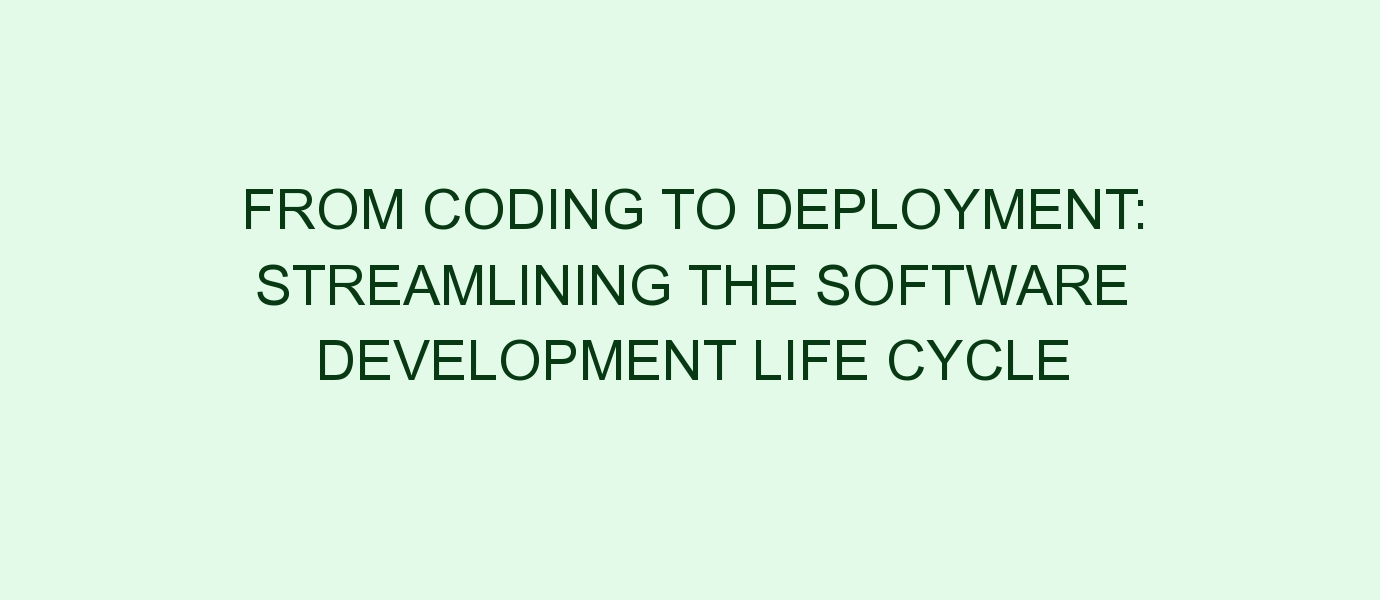From Coding to Deployment: Streamlining the Software Development Life Cycle
The software development life cycle (SDLC) is a process that consists of several phases, from conceptualization to deployment and maintenance. It is a structured approach to developing high-quality software applications. While each phase in the SDLC plays a significant role, this article will focus on streamlining the process from coding to deployment.
Coding, as the name suggests, is the phase where developers write the code for the software application. This phase is critical as it lays the foundation for the entire project. During coding, developers translate the design and requirements into a language that computers can understand. To streamline this phase, developers can follow best practices like using coding standards, naming conventions, and commenting their code. These practices make the code more readable, maintainable, and easier to understand for other developers.
The next phase is testing and quality assurance (QA), which involves identifying and fixing any bugs or issues. To streamline this process, developers can adopt a test-driven development (TDD) approach. TDD involves writing tests before writing the actual code. This approach helps catch bugs early in the development process, making it easier and faster to fix them. Additionally, utilizing automated testing tools can automate repetitive and time-consuming tests, reducing the overall testing time.
Once the coding and testing phases are complete, the application is ready for deployment. Streamlining the deployment process is crucial to ensure a seamless transition from development to production. One way to do this is by utilizing continuous integration and continuous deployment (CI/CD) pipelines. CI/CD pipelines automate the process of building, testing, and deploying software applications. This automation reduces the chances of human error and ensures that every change made to the codebase is thoroughly tested and deployed in a controlled manner.
In addition to CI/CD pipelines, containerization technologies like Docker have gained popularity in recent years. Docker allows developers to package their applications and dependencies into containers, making deployment easier and more consistent across different environments. With containerization, developers can ensure that the application runs the same way in development, testing, and production environments, reducing the chances of deployment-related issues.
Furthermore, adopting infrastructure-as-code (IaC) practices can streamline the deployment process. IaC involves using code to automate the provisioning and management of infrastructure resources. Tools like Terraform or AWS CloudFormation allow developers to define and manage infrastructure resources programmatically, making it easier to reproduce infrastructure configurations across different environments. This eliminates the need for manual configuration and reduces the chances of human error during deployment.
Once the software application is deployed, it enters the maintenance phase. Streamlining the maintenance process includes actively monitoring the application’s performance and addressing any issues promptly. Adopting a DevOps culture and utilizing monitoring tools can help streamline the maintenance process. DevOps promotes collaboration and communication between development and operations teams, ensuring that any issues discovered post-deployment are addressed in a timely manner.
In conclusion, streamlining the software development life cycle from coding to deployment involves adopting best practices like coding standards, test-driven development, automation through CI/CD pipelines, containerization, infrastructure-as-code, and maintaining a DevOps culture. By integrating these practices into the development process, organizations can ensure a more efficient and effective software development life cycle, resulting in high-quality software applications delivered in a timely manner.




